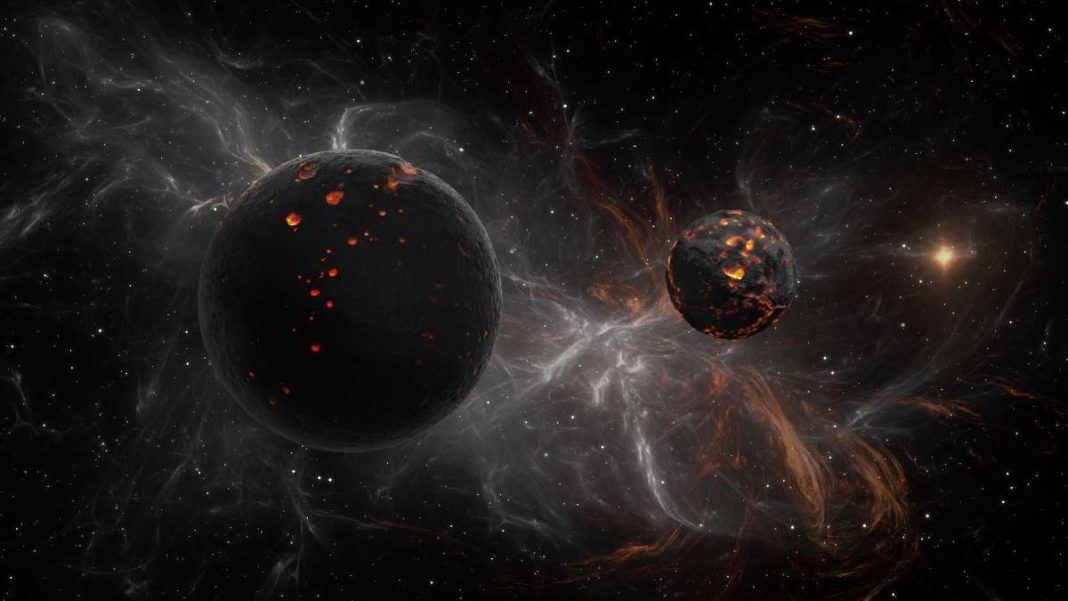UNITED STATES: Scientists from the California Institute of Technology (Caltech) have proposed that two massive structures deep within the Earth’s mantle, known as large low-velocity provinces (LLVPs), are remnants of an ancient planet named Theia. This celestial body is believed to have violently collided with Earth billions of years ago, leading to the formation of our Moon.
The LLVPs, each twice the size of the Moon, were first identified in the 1980s when scientists measured seismic waves traveling through the Earth. These waves exhibited a significant slowdown when passing through two regions: one beneath Africa and the other beneath the Pacific Ocean. The density of these areas, believed to be rich in iron, raised questions about their origin.
For decades, the origin of these mysterious structures has been a subject of debate. However, a recent study published in the prestigious journal Nature suggests a groundbreaking theory: these structures are remnants of Theia, the ancient planet responsible for the Moon’s creation.
The lead researcher of the study, Qian Yuan, had a ‘eureka moment’ during a seminar on planet formation in 2019. Yuan realized that the iron-rich impactor, Theia, could have transformed into these mantle blobs. Using sophisticated computer simulations, Yuan and his team modelled various scenarios for Theia’s chemical composition and its collision with Earth. The results confirmed that the physics of the collision could have led to the formation of both the LLVPs and the Moon.
Remarkably, despite the violent impact, Theia’s material clumped into two distinct blobs within the Earth’s mantle instead of mixing with the rest of the forming planet. The simulations revealed that a significant portion of the energy delivered by Theia’s impact remained in the upper half of the mantle. This unique distribution allowed the iron-rich material from Theia to remain largely intact as it sifted down to the base of the mantle.
Paul Asimow, a professor at Caltech, points out, “A logical consequence of the idea that the LLVPs are remnants of Theia is that they are very ancient.” Consequently, understanding their influence could shed light on Earth’s earliest evolution, including the formation of the first continents and the origin of the oldest surviving terrestrial minerals.
The implications of this research are far-reaching. Not only does it provide an explanation for the origin of the LLVPs, but it also offers insights into how celestial events, such as the collision with Theia, have shaped Earth’s geological history. As scientists continue to explore this theory, we may gain a deeper understanding of our planet’s ancient past and the processes that have influenced its development over billions of years.
The next steps for the researchers involve examining how the presence of Theia’s heterogeneous material deep within the Earth may have influenced our planet’s interior processes, including plate tectonics. This exciting discovery opens a new chapter in our understanding of Earth’s history and its connections to the cosmos, making it one of the most significant scientific findings of recent years.
Also Read: Exploring the Cosmos: How Astronomers Discover Exoplanets



